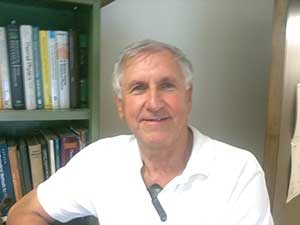Physics Tools for Cultural Heritage Investigations
Roy Jerome (Jerry) Peterson , FIP Chair Elect 2017
The Session S28: Physics Tools for Cultural Heritage Investigations, sponsored by the FIP at the APS March meeting 2017, has been focused on the interplay between Art and Physics. The session, chaired by Roy Jerome Paterson, FIP Chair Elect 2017, hosted five speakers and showed how experimental physics techniques can provide a powerful tool to study artifacts and reveal unexpected details or structures in the common human heritage. The first speaker, Michael Wiescher, from Notre Dame, developed an innovative experimental physics methods for historical and artistic studies. He provided in his talk an overview of the methods and showed some of its recent results in investigating Cultural Heritage by means of these techniques.
You may view his presentation at http://meetings.aps.org/Meeting/MAR17/Session/S28.1.
The second speaker, Charles Falco from the University of Arizona, spoke about the insights into optics made by Ibn al-Haythem (Latinized as Alhazen or Alhacen), scientist and artist living in Cairo, in the tenth century. He demonstrated how Alhazen’s studies strongly influenced the modern vision of optics and geometry, inspiring the European vision of the research.
The third speaker was Pablo Londero, a physicist working in optics at the Yale Institute for the Preservation of Cultural Heritage, he showed how to use laser based techniques to puff a tiny cloud from a valuable painting and how Raman spectroscopy can analyze the colorants, in tiny increments of depth.
Elena Guardincerri, another speaker, from Los Alamos, is currently working in a group using cosmic ray muons as probes of large objects. These penetrating (and free) particles suffer small angle scattering from nuclei, and can map out internal materials. Recently Elena is involved in an upcoming project aiming to develop muon chambers of small dimension and light enough to be mounted atop the Duomo in Florence, to investigate its internal bracing.
The final speaker, Rob Tykot of the University of South Florida, working in the field of Anthropology, is using a small, handheld X-ray source and detector for his research, to identify trace elements in large sample collections. He showed how the use of such data can track the prehistoric trade routes for obsidian, identified by source through the trace elements characteristic of the few mines for this useful material.
You may view this presentation at http://meetings.aps.org/Meeting/MAR17/Session/S28.5.
Together, these speakers described currently available experimental physics techniques, and understandings to address a wide range of artistic and historical questions, and made their methods, results, and inferences clear to an appreciative audience.

